Notes from the Guard Timber Sale
Twenty minutes from Estacada and moments from the popular Helens Lake Shore camp site the Guard timber sale on Mt. Hood National Forest is in its final stages of being logged.
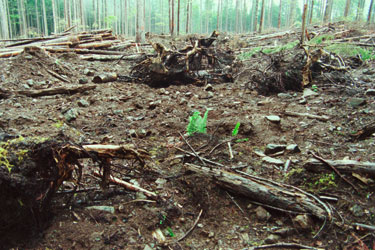
After the chainsaws at the Guard timber sale

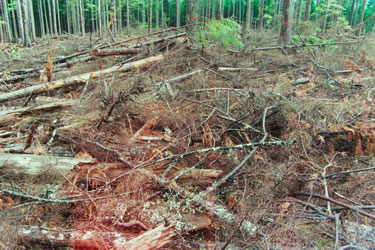
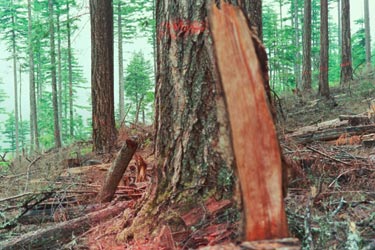
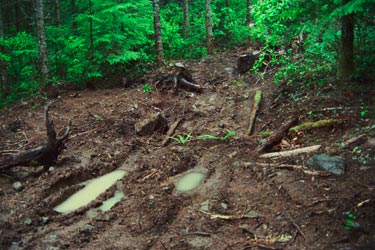
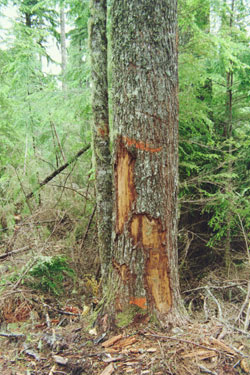
Why make such a big deal about snags? After all, these trees are already dead or dying and are just waiting to fall over. The reason is very simple, it has been shown by those who study forest health that in the decades before they eventually fall, these standing dead and dying trees provide homes to animals essential to forest health. Even a cursory examination of Forest Service documents show how snag-living species like flying squirrels are vital for tree health and snag-nesting black-backed woodpeckers are vital in keeping populations of destructive beetles in check. Both the flying squirrel and the snag roosting/nesting pileated woodpecker are considered “keystone” species due to the size and extent of their influence on the forest ecosystem. It is clear, standing dead and dying trees are essential to forest health. (These references are short documents written by forest scientists for non-scientists (so don’t be intimidated) and are just quick examples of why snags and standing dying trees are essential to forest health.)
A trip to units 9, 3, and 4 showed not just that most pre-existing snags have been knocked to the ground, but that decaying live trees (hollow center with solid outer heartwood and sapwood) sitting on logging trucks. The understanding of how important these standing dead and dying trees has clearly not made it to the logging contractors or the Forest Service employees overseeing this logging project.
In the past the Forest Service has evaded placing responsibility for these types of in-the-field failures by their personnel or the logging contractors. They have used O.S.H.A. safety standards (which quite reasonably require logging personnel to not be placed at risk by a standing dead tree falling on them) as one excuse, following by with the rationalization that they can always manufacture a standing dead tree (by blowing off the top of the tree with dynamite, for example). These papered-lies are exposed in the field. The hollow tree on the logging truck was in no danger of falling – if it had been that rottend, it wouldn’t have been brought to the mill. As for “manufactured snags,” there has only been one study about their effectiveness, and that one study shows a 1% success rate. This largely invisible damage done to the health of our Mt. Hood National Forest will take generations to repair.
Take a quick trip and see for yourself. Unit 3 (“snags would be retained and/or created to meet the 100 percent population level for primary cavity nesters”) is on both sides of Rt. 45 and you will never need to leave the paved road. To get there, go to Estacada (Rt. 224) and take 211 towards Mollala. After 8 miles or so at a bottom of a hill (the turn suddenly comes into view) take a right towards Dodge. This is Rt. 45 and after twisting and turning through some scenic country it will enter the Mt. Hood National Forest. Unit 3 is under 5 minutes from the National Forest boundary (it is either still being actively logged or has been so recently finished that you can’t miss it), if there is still active logging there will be a watchman who can alert you to any areas to avoid. Find a safe place to park and take a look. Unit 4 is another 10+ minutes away and requires driving on graveled roads. Take your first right (4510 and the gravel starts) and continue for around two miles to a fork in the road; the road you want is 4510-130 which is the right-fork (slightly downhill) through the gate (which should be open). Towards the end of this road it has been reconstructed and is a little rough, but it does pass the “Ford Escort” test. Go to the end of this road, park, and follow the freshly bulldozed dirt road to the left and in less than a minute you will come to unit 4.
- by Charlie Ferranti
June 28, 2004.
More about Guard...




